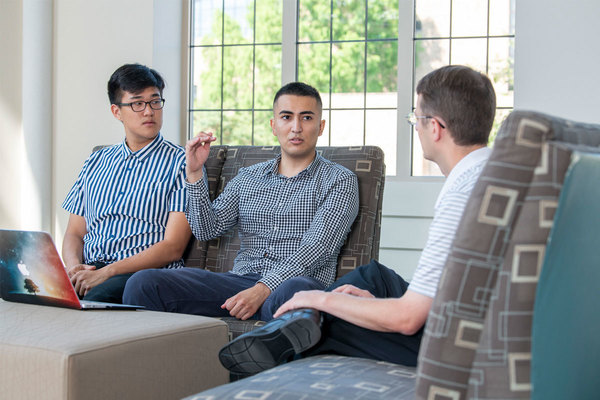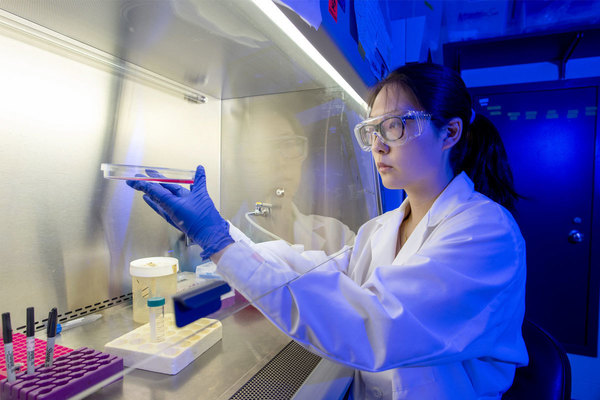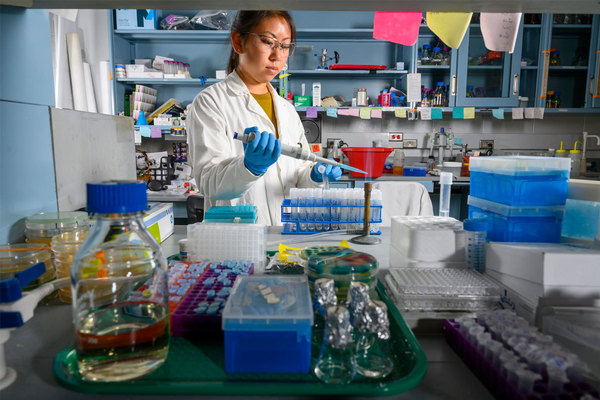Many University of Notre Dame science students stayed on campus this summer to do research to investigate topics as diverse as neuroscience, astronomy, and the causes and treatment of disease. Using new technologies and even developing some of their own, they applied the information they learn in classes to real-world research. Here, a few students share some of the most memorable moments from their impactful summer at Notre Dame.

Ashby Martin ’20
Neuroscience and Behavior major
From Bolingbrook, Illinois
Ashby researched an eye condition called leukocoria with Kasturi Haldar, the Rev. Julius A. Nieuwland, C.S.C. Professor of Biological Science and the Parsons-Quinn Director at The Boler-Parseghian Center for Rare & Neglected Diseases. He also helped start a college campus awareness campaign, “Know the Glow,” which will help students spot this disease’s characteristic gold-looking eyes in photographs.
“I love my advising professors and coworkers," Ashby said. "The Rare and Neglected Disease Center is filled with highly intelligent and wonderful people, and I’m lucky to be able to work with them on a daily basis.”

Yanting Luo ’20
Biological Sciences major
From Shanghai, China
Since patients with low levels of the mitochondrial gene UQCRH often suffer worse experiences with cancer, Yanting explored how this deficiency affects the energy and metabolism of kidney and ovarian cancer cells. Her advisor was Xin Lu, the John M. and Mary Jo Boler Assistant Professor in the Department of Biological Sciences.
“I like that I am trying to discover more about life, which is so closely related to us and the source of almost everything we love,” Yanting said.
Clare Cahir, ’20

Chemistry major, with a supplemental major in Italian
From Morris Plaines, New Jersey
Clare worked with Patricia Champion, associate professor in the Department of Biological Sciences, to helped create and analyze versions of tuberculosis with parts of their ESX-1 system genes deleted, to determine which signals produced by the system cause harm to the human body.
“I am enjoying being able to experience what working in a research lab full time would be like and also getting to know the really awesome people that make up the lab,” Clare said.
Adapted from original article published by at science.nd.edu on September 18, 2019.